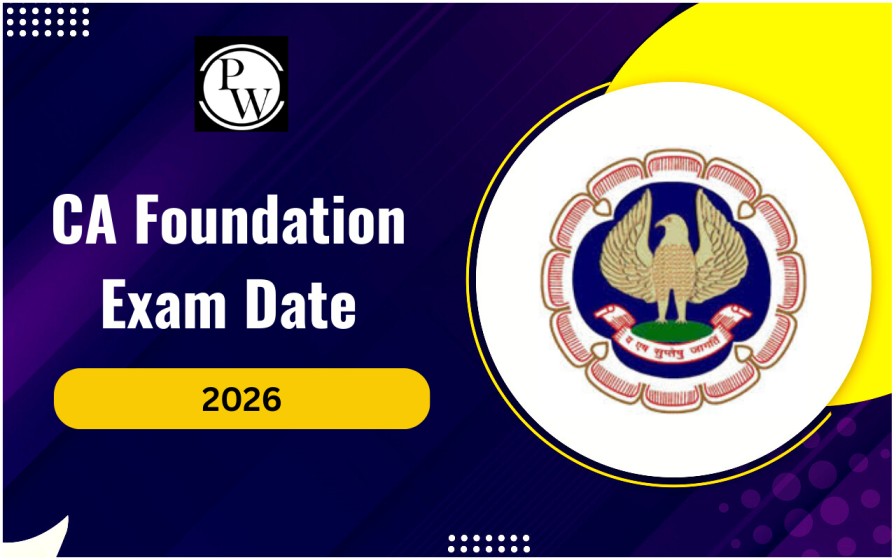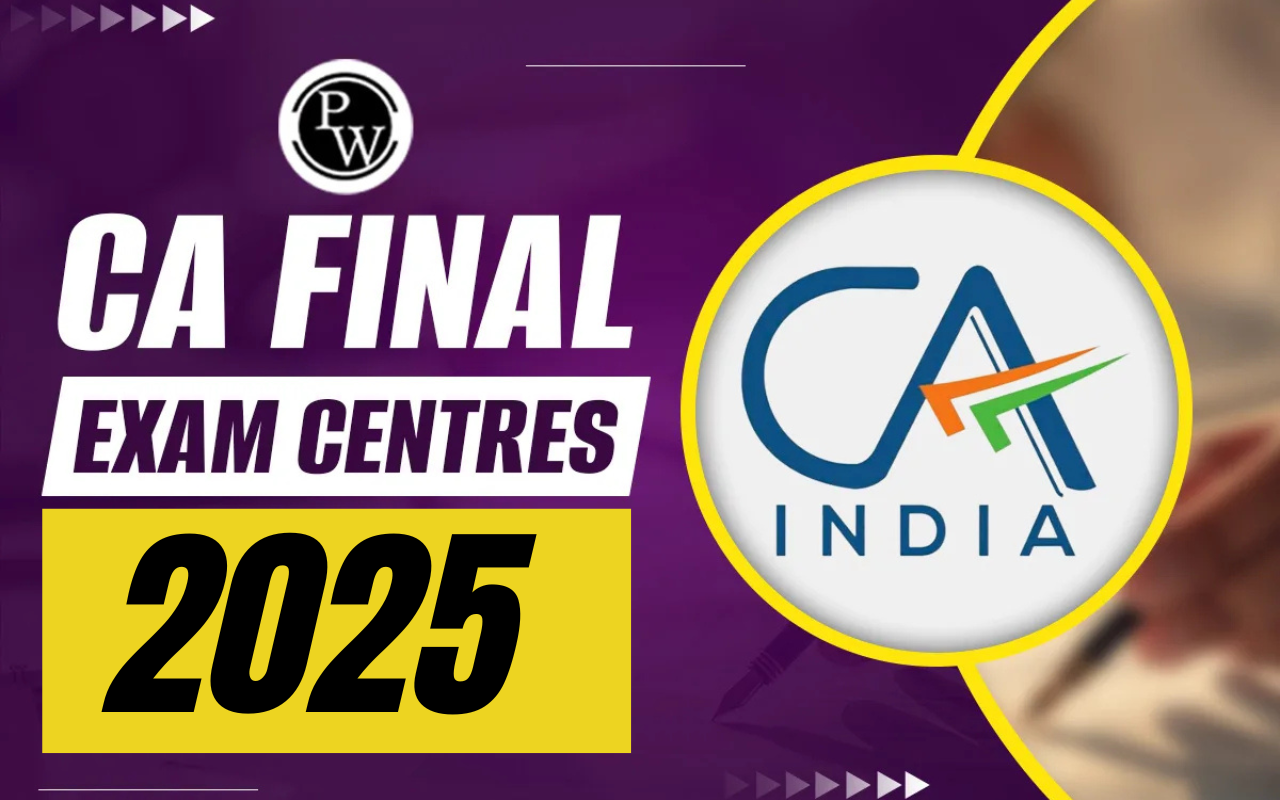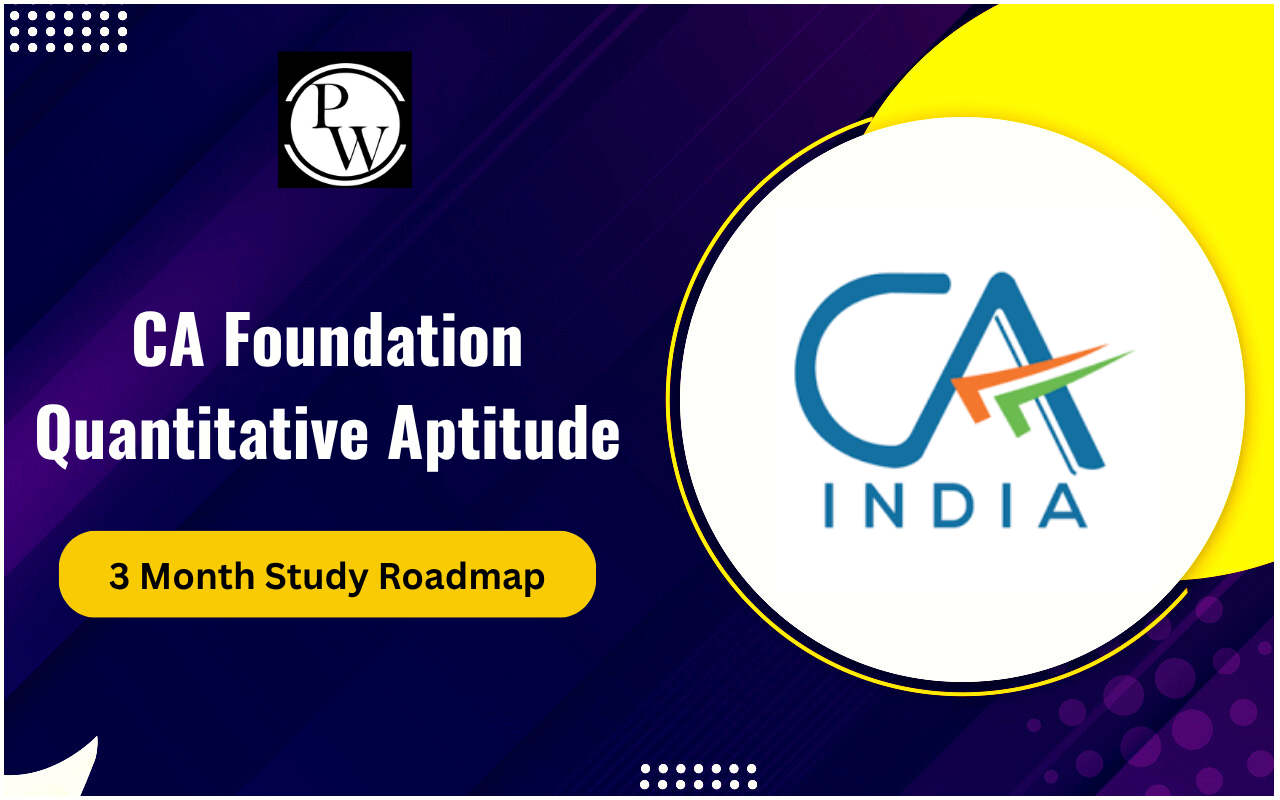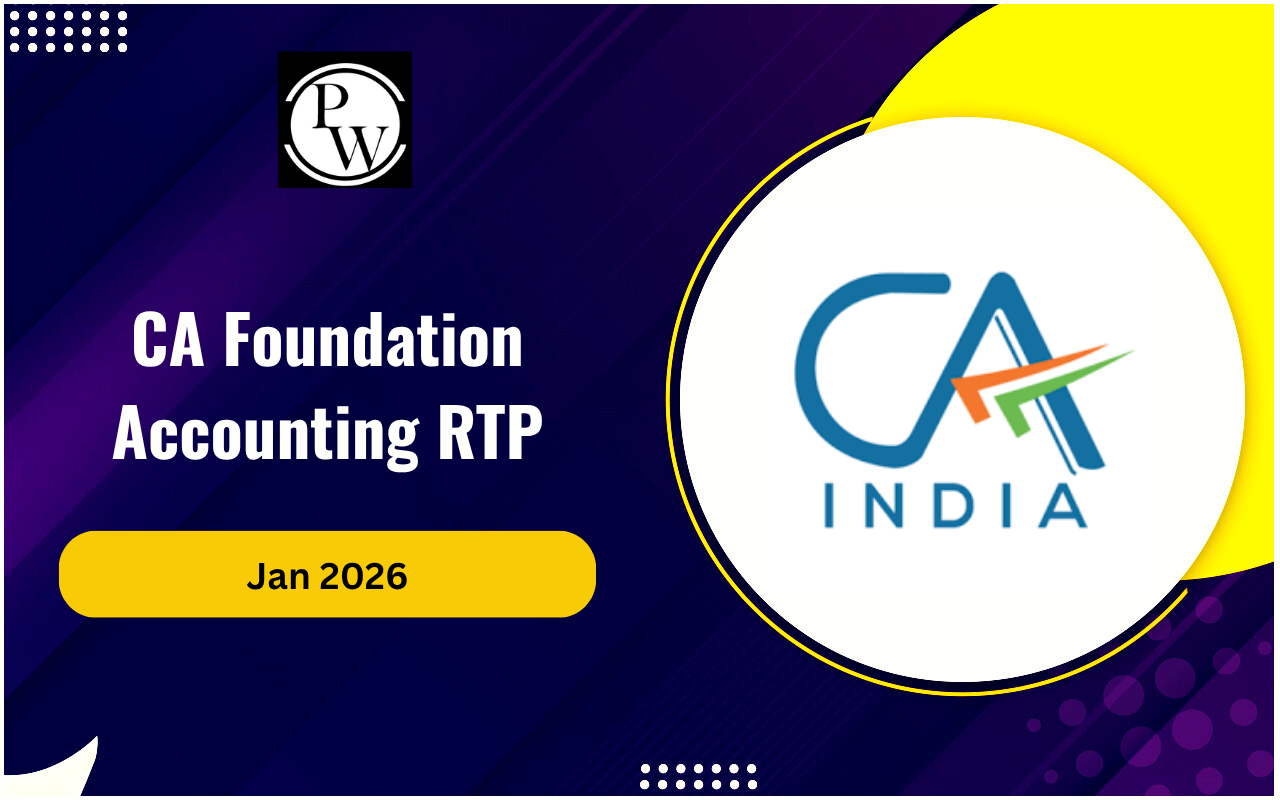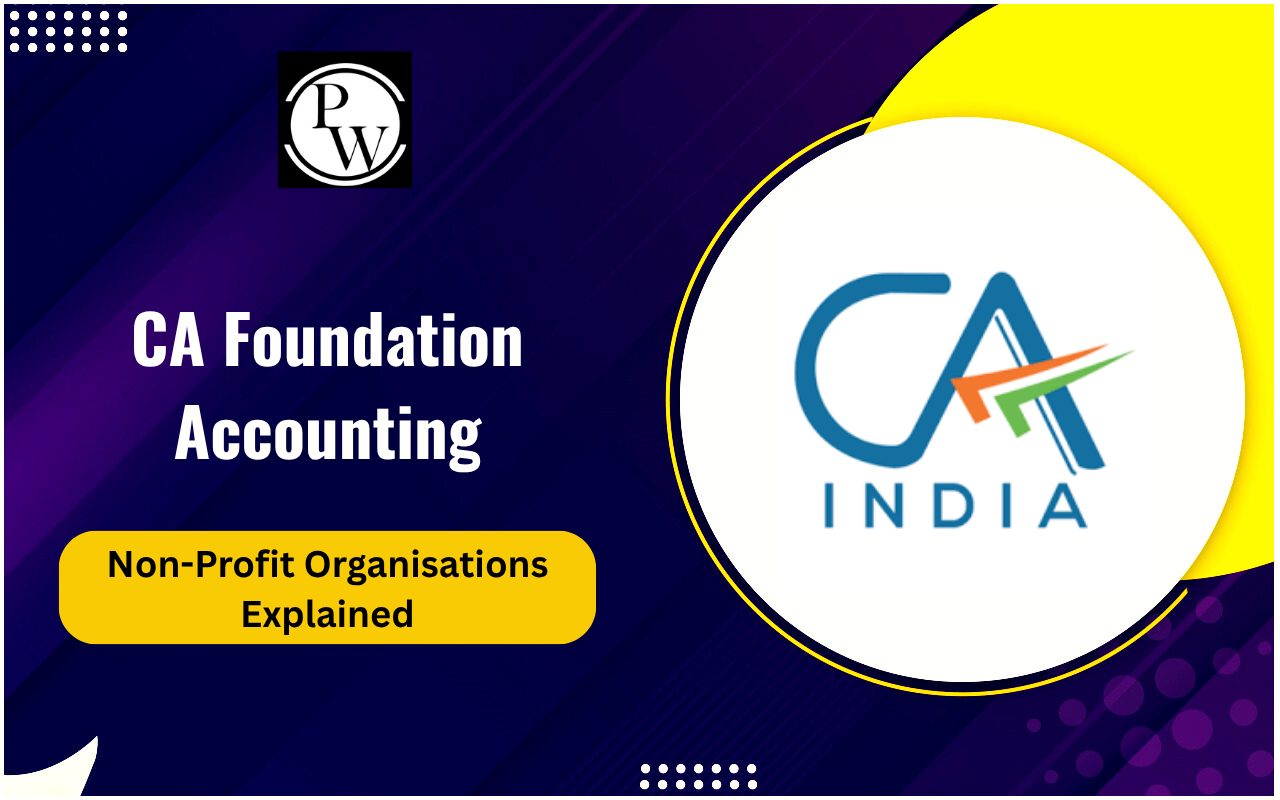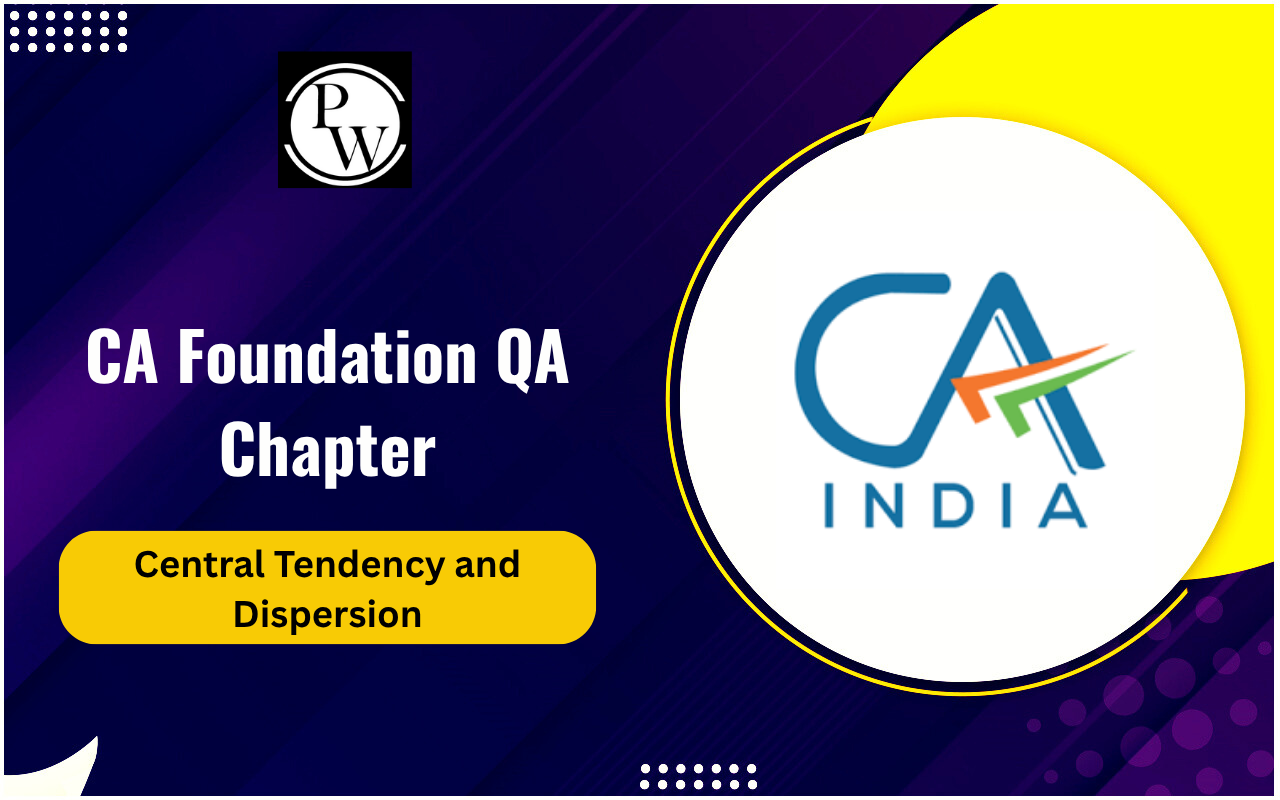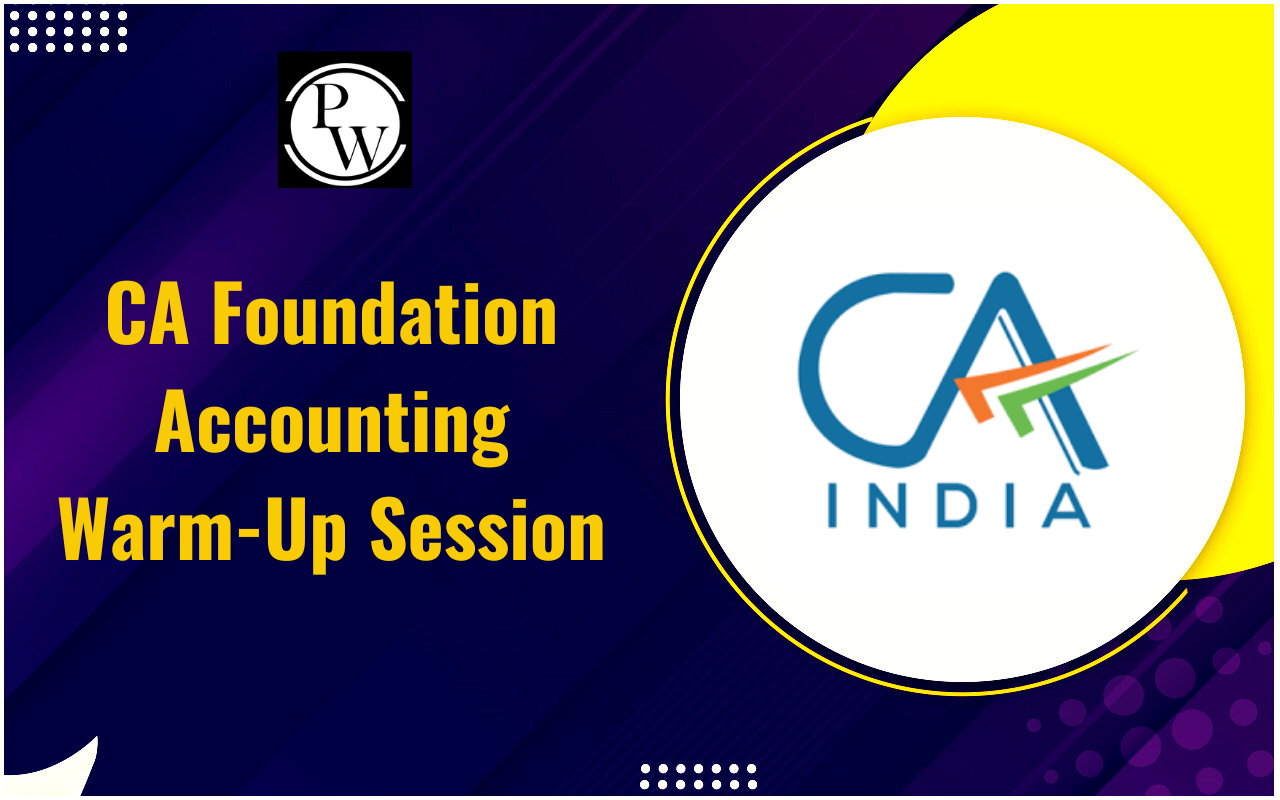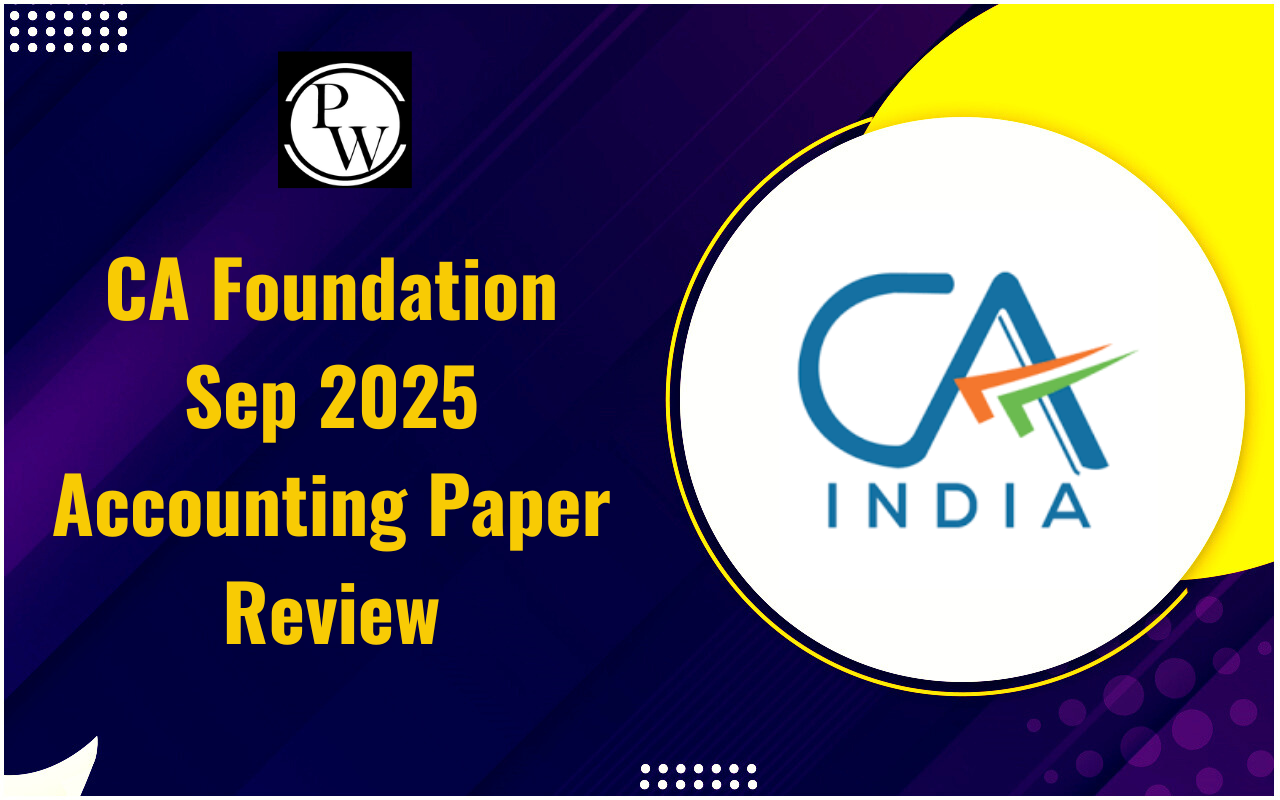
Quantitative Aptitude Preparation for CA Foundation: Quantitative Aptitude is a crucial paper in the CA Foundation curriculum. It comprises three key areas, namely Business Mathematics, Logical Reasoning, and Statistics. This subject is designed to assess a student's ability to apply mathematical concepts, think logically, and interpret statistical information accurately.
CA Foundation Quantitative Aptitude bridges the gap between academic learning and real-world business applications. For effective preparation, it’s important for aspirants to understand each topic, learn the application of specific formulas, and take practice tests to improve the problem solving skills.
Quantitative Aptitude CA FoundationSyllabus Overview
Quantitative Aptitude in the CA Foundation course is structured to develop a student's numerical and analytical reasoning. Before starting the preparation, candidates must get familiar with all the topics covered in the CA Foundation Quantitative Aptitude paper:
| Quantitative Aptitude CA Foundation Syllabus Overview | |
| Section | Chapter |
| PART A: Business Mathematics | Chapter 1: Ratio and Proportion, Indices, Logarithms |
| Chapter 2: Equations | |
| Chapter 3: Linear Inequalities | |
| Chapter 4: Mathematics of Finance | |
| Chapter 5: Basic Concepts of Permutations and Combinations | |
| Chapter 6: Sequence and Series – Arithmetic and Geometric Progressions | |
| Chapter 7: Sets, Relations and Functions, Basics of Limits and Continuity | |
| Chapter 8A: Basic Applications of Differential Calculus in Business and Economics | |
| Chapter 8B: Basic Applications of Integral Calculus in Business and Economics | |
| PART B: Logical Reasoning | Chapter 9: Number Series, Coding-Decoding, Odd Man Out |
| Chapter 10: Direction Sense Tests | |
| Chapter 11: Seating Arrangements | |
| Chapter 12: Blood Relations | |
| PART C: Statistics | Chapter 13 Unit I: Statistical Description of Data |
| Chapter 13 Unit II: Sampling | |
| Chapter 14 Unit I: Measures of Central Tendency | |
| Chapter 14 Unit II: Dispersion | |
| Chapter 15: Probability | |
| Chapter 16: Theoretical Distributions | |
| Chapter 17: Correlation and Regression | |
| Chapter 18: Index Numbers | |
Also Read: CA Foundation Quantitative Aptitude Notes
Quantitative Aptitude Preparation Strategy for CA Foundation
To perform well in CA Foundation quantitative aptitude tests, candidates should focus on covering each topic and solving various types of questions that are frequently asked in the exam. Here are the recommended preparation strategies candidates should follow to strengthen their conceptual understanding and problem-solving skills across all topics:
-
Gain Conceptual Clarity
Begin by thoroughly understanding the basic principles behind each topic. Candidates can use the official ICAI study material as their primary reference. Additionally, they should enhance their study session with session notes and video lessons provided by their CA Coaching Classes. When covering each topic, they must pay close attention to the solved examples to build clarity.
-
Consistent and Varied Practice
Candidates should practice regularly with a range of problems, including past year questions ICAI sample papers, and DPPs. This approach aims at improving familiarity with question patterns and enhances problem-solving skills.
-
Effective Time Allocation
Candidates should learn to divide their exam time wisely. For this, they should set time limits while practising problems from sample papers. Additionally, they should consider including mock tests in their study routine. With repeated practice, candidates can develop an effective time allocation strategy for each section. This ensures candidates can attempt all questions during the actual test without rushing.
-
Apply Shortcuts
Use maths and logical reasoning shortcut techniques to speed up calculations and minimise errors, especially in Business Mathematics and Logical Reasoning. These tricks are based on pattern recognition and can simplify complex problems and save time in areas like interest calculations, permutations, and coding-decoding. Candidates should practice these tricks regularly to ensure faster, more accurate responses in the actual exam.
-
Mock Tests and Review
Attempt full-length mock exams under timed conditions to get familiar with the exam environment. After each test, candidates should analyse their mistakes to identify the areas that need improvement. Further, they should focus on revising these concepts to strengthen weak sections.
Also read: How to Prepare for CA Foundation with Class 11 and 12th?
Quantitative Aptitude CA Foundation Topic-Wise Weightage
A smart preparation strategy for the CA Foundation quantitative aptitude paper includes a clear understanding of the section-wise weightage. The weightage presents the percentage of questions asked from a specific section in the actual exam. Based on the previous CA Foundation QA exam, the table below presents the expected section-wise weightage:
| Quantitative Aptitude CA Foundation Topic-Wise Weightage | |
| Sections | Weight in Exam |
| Business Mathematics | 40% |
| Logical Reasoning | 20% |
| Statistics | 40% |
Crucial Mathematical and Statistical Formulas for CA Foundation
Mastering the right formulas is crucial for solving questions quickly and accurately in the CA Foundation quantitative aptitude exam. With the right techniques and consistent practice, these formulas can significantly improve candidates’ speed and accuracy in exams.
For the business mathematics section, candidates must understand and memorise the following formulas:
-
Simple Interest: To find interest on principal over time, use
-
SI = (Principal × Rate × Time) / 100
-
Compound Interest: For interest compounded annually, the formula is
-
Amount = Principal × (1 + Rate/100)ᵗ
-
Permutations: To calculate possible arrangements where order matters, use
-
P(n, r) = n! / (n − r)!
-
Combinations: For selections where order doesn't matter, apply
-
C(n, r) = n! / [r!(n − r)!]
-
Logarithmic Rules: One important identity to remember is
-
log(ab) = log a + log b
For the statistics section, candidates must learn these formulas with their practical application:
-
Mean: For finding the average of a data set
-
Mean = Total of all observations / Number of observations
-
Variance: Measures the spread of data from the mean
-
Variance = Σ(Each value − Mean)² / Number of values
-
Standard Deviation: The square root of variance, indicating dispersion
-
SD = √Variance
-
Correlation Coefficient: To assess the relationship between two variables
-
r = Σ[(x − 𝑥̄)(y − 𝑦̄)] / √[Σ(x − 𝑥̄)² × Σ(y − 𝑦̄)²]
| Also Read: |
| Heads of Income |
| Company Formation and Incorporation in India |
| Income from House Property |
| Role of Information Technology in Strategic Management |
Quantitative Aptitude Preparation for CA Foundation FAQs
How to prepare quantitative aptitude for CA Foundation?
Which is the toughest paper in CA Foundation?
Is 2 months enough to crack CA Foundation?
What are passing marks in CA Foundation?
What is the toughest chapter in CA Foundation QA?

